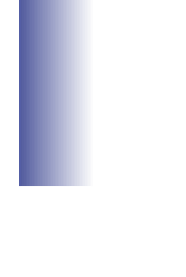Geoscience Reference
In-Depth Information
Table 6.3
Some of the common erosional sedimentary structures and their processes of formation. Figure
numbers prefi xed with an A can be found in Appendix A6.
Structure
Size
Features to observe
Processes
Figure
Flute casts
cm
Orientation provides
palaeocurrent direction
Turbulent eddy of a turbidity
current
A6.17y
Tool marks
including groove
casts
cm
Orientation of some
provides palaeocurrent
direction
Features produced by the
erosion and entrainment of
larger clasts by currents. The
clasts are dragged, bounced or
dropped on the surface. There
are a wide range of structures
from prod marks to grooves
A6.17x
6
Scours
m
Possible association
with erosion surface
Erosion from currents or waves
A6.17w
Channels
10s m
Evidence for base-level
fall; possible change
from marine to fl uvial
or submarine incision
Large-scale erosion from fl ow
3.1b, 4.5,
6.12
Gutter casts
5-10s cm
wide, length
10s m
Orientation provides
palaeocurrent direction
Rip currents
6.12f
Glacial striations
cm to m
Orientation shows
direction of ice
movement
Ice-sheet movement
-
Table 6.4
Some of the common early and late post-depositional sedimentary structures and their processes of
formation. Figure numbers prefi xed with an A can be found in Appendix A6.
Structure
Size
Features to observe
Processes
Figure
Early post-depositional structures
Nodules (early
diagenetic)
cm-m
Size, composition. Early
diagenetic nodules are
fl attened ovoids and the
laminae or bedding become
gradually wider apart near
the middle of the nodule.
Check if multigenerational
due to reworking
Changes in the pore-
water chemistry a few
decimetres to metres
below the sediment-water
interface
6.2a,
A6.17z,aa
Deformed/convolute
bedding
cm-m
Extent, any sense of
movement direction, possible
erosion
Unstable sediments due to
angle of deposition, high
sedimentation rate,
change in pore-water
pressure or earthquakes or
other structural disturbance
A6.17gg
Slumps and slides
cm-km
-










